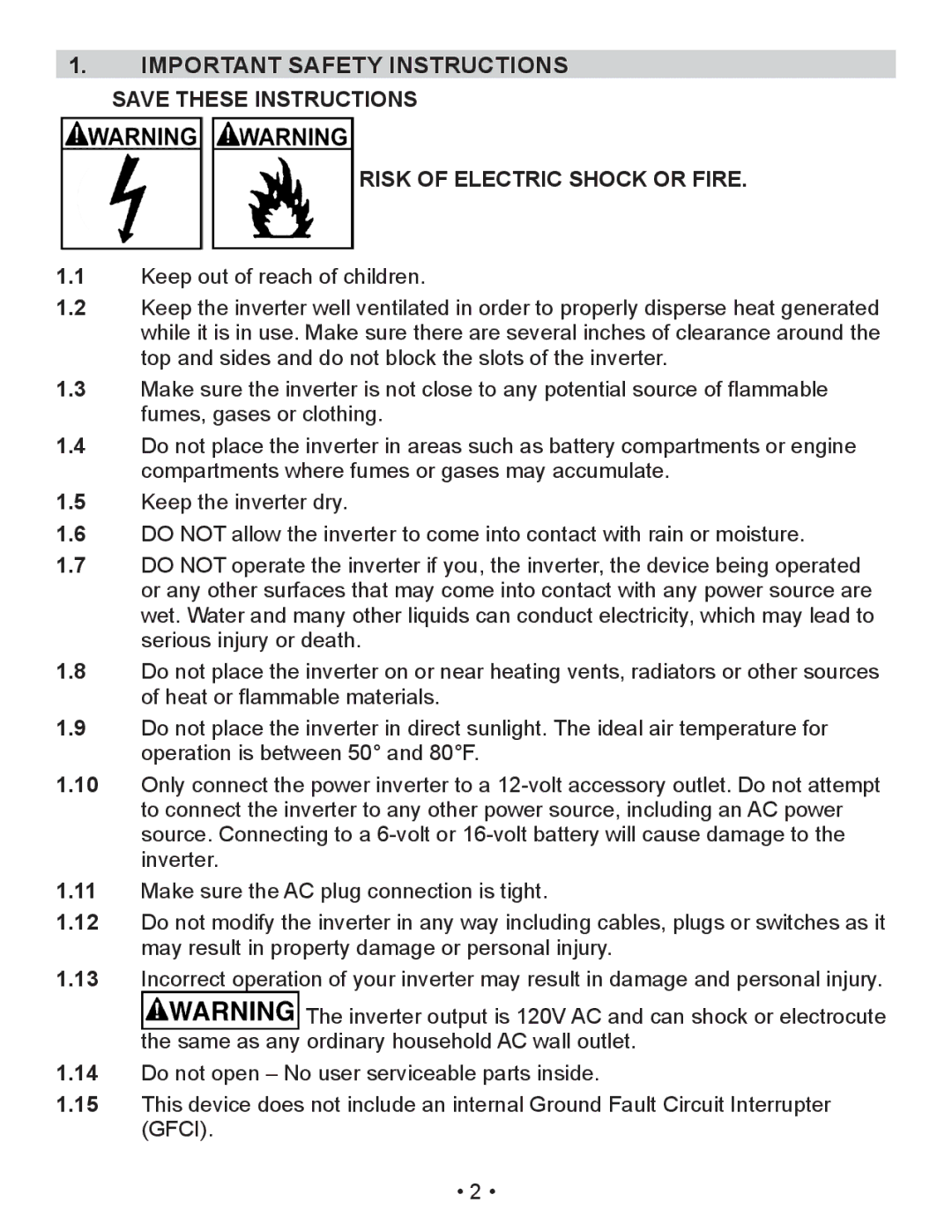
1.IMPORTANT SAFETY INSTRUCTIONS SAVE THESE INSTRUCTIONS
Risk of electric shock or fire.
1.1Keep out of reach of children.
1.2Keep the inverter well ventilated in order to properly disperse heat generated while it is in use. Make sure there are several inches of clearance around the top and sides and do not block the slots of the inverter.
1.3Make sure the inverter is not close to any potential source of flammable fumes, gases or clothing.
1.4Do not place the inverter in areas such as battery compartments or engine compartments where fumes or gases may accumulate.
1.5Keep the inverter dry.
1.6DO NOT allow the inverter to come into contact with rain or moisture.
1.7DO NOT operate the inverter if you, the inverter, the device being operated or any other surfaces that may come into contact with any power source are wet. Water and many other liquids can conduct electricity, which may lead to serious injury or death.
1.8Do not place the inverter on or near heating vents, radiators or other sources of heat or flammable materials.
1.9Do not place the inverter in direct sunlight. The ideal air temperature for operation is between 50° and 80°F.
1.10Only connect the power inverter to a
1.11Make sure the AC plug connection is tight.
1.12Do not modify the inverter in any way including cables, plugs or switches as it may result in property damage or personal injury.
1.13Incorrect operation of your inverter may result in damage and personal injury.
The inverter output is 120V AC and can shock or electrocute the same as any ordinary household AC wall outlet.
1.14Do not open – No user serviceable parts inside.
1.15This device does not include an internal Ground Fault Circuit Interrupter (GFCI).
•2 •
